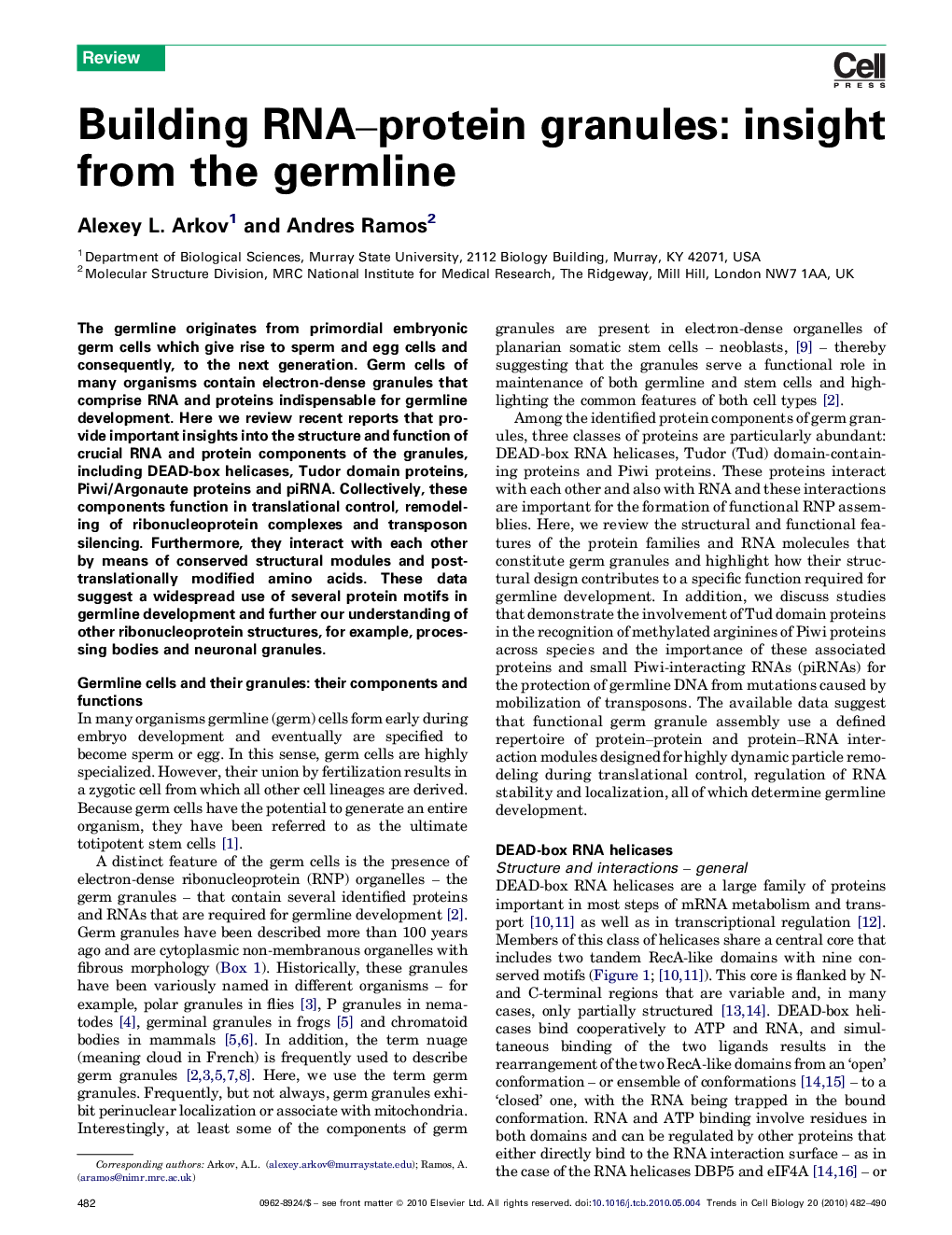| Article ID | Journal | Published Year | Pages | File Type |
|---|---|---|---|---|
| 2204854 | Trends in Cell Biology | 2010 | 9 Pages |
The germline originates from primordial embryonic germ cells which give rise to sperm and egg cells and consequently, to the next generation. Germ cells of many organisms contain electron-dense granules that comprise RNA and proteins indispensable for germline development. Here we review recent reports that provide important insights into the structure and function of crucial RNA and protein components of the granules, including DEAD-box helicases, Tudor domain proteins, Piwi/Argonaute proteins and piRNA. Collectively, these components function in translational control, remodeling of ribonucleoprotein complexes and transposon silencing. Furthermore, they interact with each other by means of conserved structural modules and post-translationally modified amino acids. These data suggest a widespread use of several protein motifs in germline development and further our understanding of other ribonucleoprotein structures, for example, processing bodies and neuronal granules.
